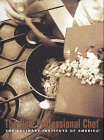
Lifeblood of Navy: Good Coffee
The Best
Coffee Makers use the Best Coffee in the World
By JOC Earl Smith, USN
[Coffee on the Bridge]
[Navy’s Roasting Plant] [Don’t Wash the Pot]
[Learning to Brew] [First Coffee Drinkers] [It’s All in a Name]
Sailors can nonchalantly polish their fingernails on their lapels -- if they had lapels -- when the conversation turns to coffee brewing. Sensitive-palate coffee quaffers admit that when it comes to preparing the delicious beverage, U.S. Navy men have no peers.
Experience is undoubtedly one reason behind this superior brewing talent for no group on earth drinks more coffee than sailors. Currently they are gulping almost a million cups per day.
It’s not just the cooks who brew coffee
In many places aboard ship such as the bridge, radio shack, machine shop, engine and firerooms, the formula for preparing a particular distinct flavored coffee is a jealously guarded secret.
While every shipboard department prepares good coffee, the supremacy of the bridge gang in this field is seldom challenged. However, according to some quartermasters, living up to this reputation has its disadvantages.
It seems that every time a pot of fragrant bridge coffee is ready, half a dozen crew members from other parts of the ship are leaning hungrily over the shoulders of the bridge force, grinning sheepishly as they toy with empty cups. The mystery of how the word gets around when the bridge has a fresh pot of joe has never been solved, but lip-smacking sailors always magically appear when it’s ready for pouring.
One quartermaster claims it is mental telepathy. "When a pot starts perking, it sets up impulses in their thick skulls," he declares. "They count the perks and when it reaches a certain number, they make a dash for the bridge, even if they in the bilges at the time."
The secret to good Navy coffee
Many innocent people are under the delusion that all you need to make a pot of coffee are the little brown beans from Rhuabaland ground up one way for another and a pot of water. You dump the two in a container, apply heat and pretty soon you have a brownish liquid that passes down the uneducated palate as coffee. They could learn a thing or two from sailor coffee concessionaires who employ more tricks in brewing a pot of joe than a clothing salesman in selling an oversized suit.
First of all, to make good coffee you’ve got to have properly blended and roasted coffee beans. BuSandA takes care of this by supplying ships and stations with the finest blended and roasted coffee obtainable. Just to make certain it’s done right, the Navy operates its own coffee roasting plants.
At two huge roasting plants located at Oakland, Calif., and Brooklyn, N.Y., carloads of green coffee beans are received from South and Central America, graded and stored. Different blends of coffee beans are poured into a mixer, then shot up a compressed air chute into the roasting ovens. These roasters are capable of roasting up to 500 pounds of beans every 15 minutes. Next the coffee is ground and packed 20-pound vacuum tins or 50-pound bags for distribution.
However, before the roasting process begins a sample is taken from each sample of coffee beans, roasted, brewed and sipped by a master taster. If it tingles his taste buds just right the Navy goes ahead and roasts it. The expert who samples the Navy’s coffee at its Oakland plant has been tasting coffee for the Navy for over 15 years, and knows a good cup of joe when he tastes it.
A seaman working in the boatswain’s locker reports he was upbraided unmercifully by the chief boatswain’s mate for washing the coffee pot. "Never wash it, just rinse it gently!" the chief roared. Scouring a pot to its bare metal is more sacrilegious to a joe pot artist that scraping a pipe bowl is to a lifelong briar puffer.
Probably the most complicated joe pot ever used in the Navy was one rigged in the engineroom of a wartime transport. Designed and built through the combined efforts of several engineering, construction and coffee brewing "experts," it was a Rube Goldbergish-looking affair with a half a dozen pressure valves, vacuum lines, drain lines, safety valves and water and coffee level indicators. The "pot" would boil on either "hot" or exhaust steam through an arrangement that put a vacuum drag on it when desired. Procuring a cup of joe was more complicated that operating the main engines, and no one under a first class petty officer was allowed to touch it. Sailors who once tasted beverage brewed in this contraption say all other coffee is flat and tasteless in comparison.
Learning to brew from their foreign hosts
Many Navy men have picked up new ideas on brewing coffee from their travels to foreign ports. Some have learned to like it prepared the South American way, in which you place the coffee, ground to a powder, in a cheesecloth. If you’re planning on a quart to brew, use at least a pint of pulverized beans. Then pour boiling water through it several times. It comes out black as midnight and thick as molasses. Next fill a thimble-sized demi-tasse cup about three-quarters full of sugar and pout the coffee over it.
Others like the method of boiling coffee in a mixture of milk and water. Some even like the system of mixing the coffee, milk and sugar together before boiling, the final product coming out a brownish syrupy substance. Instead of dissolving the sugar, a few prefer the Finnish custom of holding a sugar lump between the teeth and straining the coffee through it.
The Navy Department also has some ideas of its own on how to make a good pot of joe. While they don’t tell you one method of preparation is better than another, they do think that to extract the utmost aroma and flavor from coffee the following rules will help:
Grind coffee just prior to use. Containers of ready ground coffee should be kept tightly sealed.
Keep coffee making equipment scrupulously clean. If a filter cloth, bag or sack is used, change them often.
Use fresh grounds and never attempt to re-use. If you are running short don’t play around with the water spigot – make another run.
Coffee has been around a long time. Credit goes to the black tribes of Abyssinia for discovering that the pretty red berries had other than decorative values. According to one version, back in 875 A.D. the sheep and goat herders in the Abyssinian province of Kaffa (where coffee got its name) were having a rough time of it because their sheep and goats stayed up all night wandering restlessly around. This kept the herders awake all nigh too. Finally someone discovered the coffee bushes the animals grazed on were responsible. The herders sampled the berries and it was a case of love at first swallow. After that the sheep slept, but the herders stayed awake all night anyway – too much coffee.
The ingenious Abyssinians not only prepared a beverage from coffee, but ate it as well. Their favorite delicacy was pulverized coffee wrapped in coffee tree leaves, rolled in grease and roasted.
Java, mud, bilge – to name a few
Sailors have given more names to coffee than a titles nobleman acquires. Java, jamoke, sludge, silt, bilge, mud and a shot-in-the-arm are a few of these more refined appellations. Mostly, however, it is called joe -- probably derived from the song, "Old Black Joe."
That the U.S. sailor dearly loves his coffee is attested by the amazing amount of the berry passionately imbibed by practically everyone in the Navy. According to BuSandA, sailors are currently gulping an average of 58,000 pounds of coffee per day, including commissary sales. Based on the popular recipe that a pound of joe makes a gallon of joe, there is enough coffee drunk each day to float a 157-foot LCI -- without sugar and cream.
Just how pale and insipid shoreside coffee is when compared with robust Navy joe is illustrated by an incident which occurred when a lady invited two hash-marked sailors to "tea." Having heard than Navy men like their coffee strong, she added an extra amount of coffee and allowed it to boil twice as long as normal. The visitors nodded approvingly when the beverage was served. When time came to leave, one turned gallantly to his hostess and remarked, "Ma’am, I wanna tell you that was the finest tea I’ve ever tasted."
Reprinted from the August 1949 (No. 390) issue of All Hands Magazine.
Coffee brewing instructions and recipes
November 1999
| Bulletin Board | Keyword Search |
| Bookstore | Links |
| About Us | Recent Additions |

